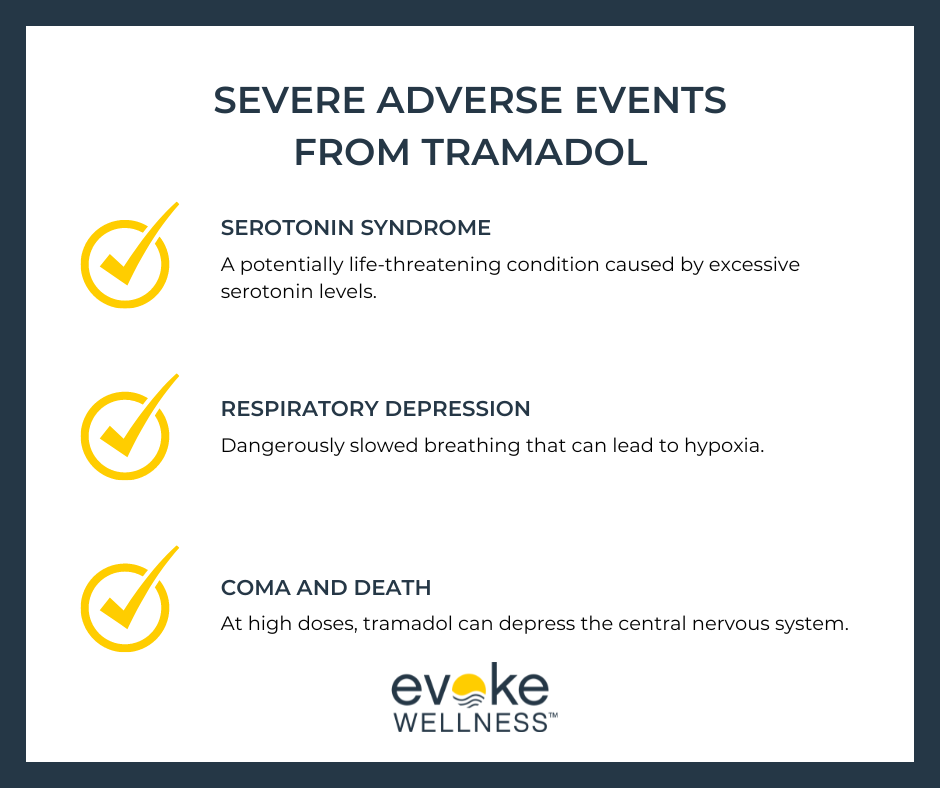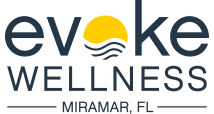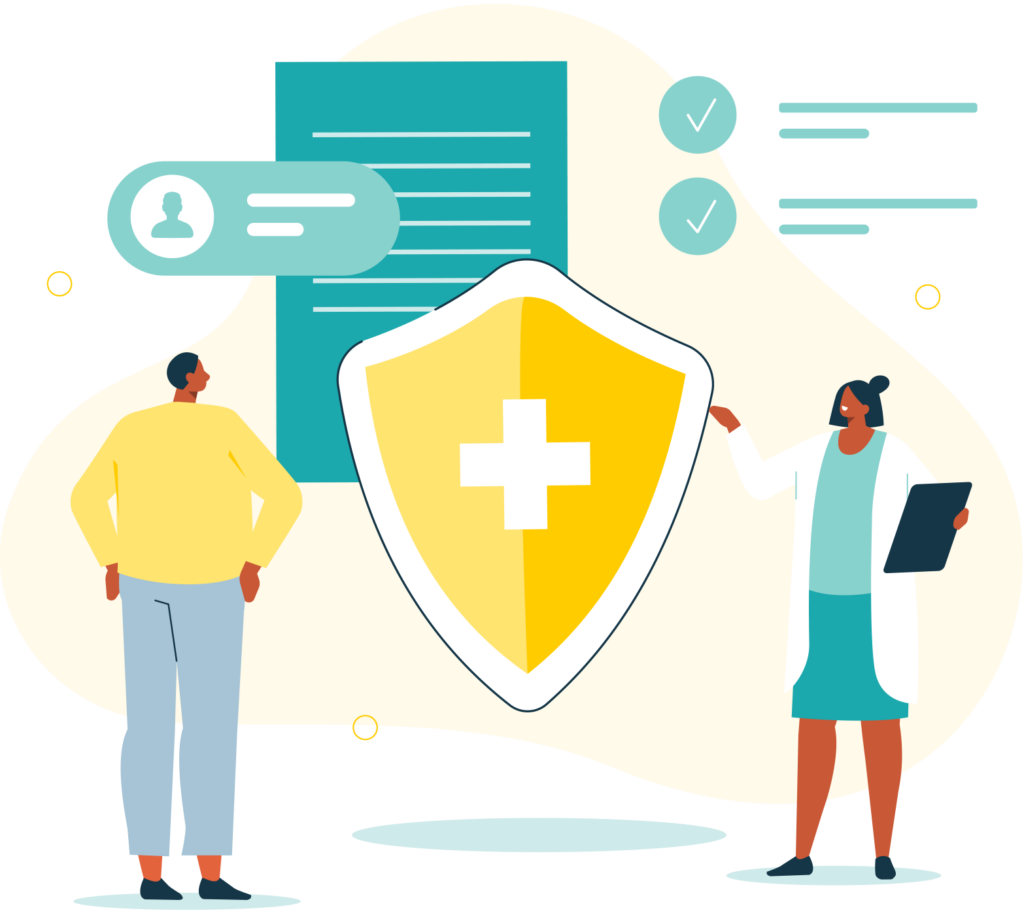Tramadol abuse is a growing concern, with many seeking its euphoric effects. But can abusing tramadol truly get you high? This powerful opioid painkiller carries serious risks when misused. Recent studies show tramadol-related emergency room visits have doubled in the past decade. While it can produce feelings of relaxation and well-being, abusing tramadol often leads to dangerous side effects and addiction. Understanding the facts about tramadol’s effects and recognizing signs of abuse are crucial. If you or a loved one is struggling with tramadol misuse, know that help is available. Prescription drug treatment programs offer specialized care to safely overcome tramadol addiction and regain control of your life.
Call Evoke Wellness at Miramar today (833) 819-6066 or reach out online.
What is Tramadol?
Tramadol, a synthetic opioid analgesic, is a prescription medication used for treating moderate to severe pain. Originally thought to have a low risk for abuse and addiction, it was reclassified in 2014 as a Schedule IV controlled substance by the DEA due to its high potential for misuse.
Mechanism of Action
Tramadol works by altering pain receptors in the brain and blocking pain signals throughout the body. It affects the central nervous system like other opioids but also increases serotonin and norepinephrine levels, improving mood and energy.
Potential for Abuse
While tramadol’s euphoric effects are milder than other opioids, they can still lead to dependence and addiction. Users may crush extended-release forms to get an intense high, increasing overdose risks. Tramadol abuse has contributed to a significant rise in ER visits, especially among those with opioid addictions seeking to ease withdrawal symptoms.
Signs of Tramadol Addiction
Potential signs include obsessively obtaining the drug, lying to doctors, stealing to buy it, using with other substances, and experiencing withdrawal symptoms like hallucinations, paranoia, anxiety, confusion, and intense cravings when not taking it.
Is Tramadol Addictive?
As an opioid painkiller, Tramadol can be highly addictive – even though it is less potent than other opioids like heroin or fentanyl. According to Evoke Wellness at Miramar, injecting Tramadol is an extremely dangerous form of misuse that increases the risk of severe health complications and addiction.
Potential for Addiction
The active ingredients in Tramadol act on the brain’s opioid receptors, producing a euphoric “high” that can quickly lead to dependence and addiction with continued misuse. Over time, users build up a tolerance and require higher doses to achieve the same effects – perpetuating a vicious cycle of abuse.
Signs of Tramadol Addiction
- Experiencing withdrawal symptoms when usage is reduced or stopped
- Taking more than the prescribed dosage
- Doctor shopping to obtain multiple prescriptions
- Isolating from friends and family
- Neglecting responsibilities at work, home or school
Treatment Options
Those addicted to Tramadol often require professional intervention through comprehensive addiction treatment programs like those offered at Evoke Wellness. Medically-supervised detox, counseling, and ongoing aftercare provide the tools needed to achieve lasting recovery.
Tramadol Side Effects and Adverse Events Associated with Misuse
Risks of Misuse
Tramadol, though less potent than traditional opioids, can still produce a high when misused. This euphoric effect increases the risk of addiction and overdose. Common side effects of tramadol misuse include nausea, dizziness, constipation and seizures.
Severe Adverse Events
More serious adverse events linked to tramadol abuse can occur, especially when combined with other substances like alcohol or benzodiazepines. These may include:

Addiction Potential
While tramadol carries a lower addiction risk than other opioids, its potential for abuse and dependence remains. According to the DEA, over 40 million tramadol prescriptions were dispensed in the U.S. in 2019, highlighting the medication’s widespread availability and misuse opportunity.
Recognizing Tramadol Addiction and Misuse
Signs of Abuse
Tramadol is a prescription opioid intended for moderate to severe pain relief. However, it carries a high risk of addiction and misuse. According to a study, signs of Tramadol addiction may include:
- Taking higher doses than prescribed
- Using for non-medical purposes (to get high)
- Experiencing withdrawal symptoms when stopping
- Continuing use despite negative consequences
Dangerous Effects
Misusing Tramadol can lead to serious health issues, including respiratory depression, seizures, and increased overdose risk – especially when combined with other substances. Early intervention is crucial to avoid physical dependence and disruptions to one’s life.
Getting Help
If you suspect Tramadol addiction in yourself or a loved one, it’s vital to seek professional help immediately. Doctors and addiction treatment programs can provide safe detox management and comprehensive recovery support services tailored to prescription opioid abuse.
Tramadol Overdose Risks and Symptoms
Overdose Dangers
Tramadol overdose can be life-threatening and requires immediate medical attention. When misused or abused, tramadol poses serious risks, including respiratory depression, brain damage, and death. According to a study, symptoms may include drowsiness, confusion, shallow breathing, slow heartbeat, seizures, and coma.
High-Risk Groups
Those with a history of opioid addiction or chronic pain conditions are at higher risk of tramadol abuse and accidental overdose. As noted, by 2021, tramadol was responsible for over 20,000 emergency room visits annually – a 250% increase from just five years prior.
Injection Dangers
Injecting tramadol can amplify its effects and health risks, leading to cognitive impairment, organ damage, vein collapse, behavioral changes, depression, and psychosis with long-term abuse. Professional treatment is crucial for overcoming injection addiction.
Tramadol Withdrawal
Symptoms and Timeline
Abruptly stopping tramadol after extended use can trigger uncomfortable withdrawal effects. Common symptoms include muscle aches, nausea, diarrhea, anxiety, and insomnia. Milder cases may last 5-7 days, but severe withdrawal from high doses could persist for weeks or months. According to Evoke Wellness at Miramar, withdrawal timelines vary based on the dose, frequency, and duration of tramadol abuse.
Medical Detox Recommended
Due to the potential severity of tramadol withdrawal, medical detox under professional supervision is strongly advised. This allows for proper tramadol taper schedules and symptom management through medications like clonidine or buprenorphine. Evoke’s blog stresses the importance of medically-assisted detox to ensure safety and improve treatment outcomes.
Continuing Treatment
After detox, engaging in further addiction treatment is crucial to maintain sobriety. Options like inpatient or outpatient rehab, behavioral therapy, and support groups provide the tools to address underlying issues and build a strong recovery foundation. Dilaudid withdrawal timelines can vary, highlighting the need for comprehensive, personalized care plans.
Tramadol Detox and Treatment
Safe Medical Detox
Quitting tramadol “cold turkey” can be extremely dangerous due to the severe withdrawal symptoms like hallucinations, paranoia, and intense cravings. The safest approach is a medically supervised detox program that provides around-the-clock care to manage withdrawal safely and comfortably.
At Evoke Wellness, our tramadol detox program offers:
- 24/7 clinical monitoring
- FDA-approved medications to ease withdrawal
- Nutrition and hydration support
- Individual and group counseling
Comprehensive Treatment
Detox alone is rarely enough for lasting recovery. Once stabilized, our evidence-based treatment combines behavioral therapies, holistic care, and peer support to address the root causes of addiction. Programs include:
- Inpatient/residential rehab
- Drug and Alcohol Detox
- Dual diagnosis for co-occurring disorders
- Family therapy and education
- Relapse prevention planning
Personalized Aftercare
Even after rehab, tramadol recovery is an ongoing process. Our team works closely with each client to develop a customized aftercare plan that provides continuing support and accountability through:
- Sober living housing
- Alumni community events
- Medication management
- Individual and group therapy
- 12-step or SMART Recovery meetings
The path to freedom from tramadol starts with a compassionate, comprehensive program tailored to your unique needs. Reach out to Evoke Wellness today.
Co-occurring Disorder and Tramadol Addiction
Dual Diagnosis
Tramadol abuse often co-occurs with other mental health disorders like depression or anxiety. This “dual diagnosis” complicates treatment as both the addiction and co-occurring disorder need to be addressed simultaneously. Proper assessment and an integrated treatment plan are crucial.
Increased Risks
Co-occurring disorders raise the risks of tramadol abuse and addiction. Individuals may self-medicate with tramadol to cope with symptoms of depression, anxiety, trauma, etc. This can lead to dependence, overdose, and other adverse effects like seizures or serotonin syndrome.
Comprehensive Care
Effective treatment requires a comprehensive, evidence-based approach tackling all co-occurring issues. This may involve medication, behavioral therapies, support groups, and lifestyle changes. Consulting addiction specialists experienced in dual diagnosis treatment is highly recommended. According to a study from the National Institute on Drug Abuse, integrated treatment is critical for achieving the best outcomes.
Prevention, Education, Support Systems, and Resources
Education & Awareness
Through education and awareness campaigns, individuals can learn about the risks associated with tramadol abuse and its potential for dependence. According to the DEA, tramadol is a synthetic opioid analgesic that carries a risk of physical and psychological dependence. Promoting knowledge about its proper use and the dangers of misuse can help prevent addiction.
Support Systems
Having a strong support system, whether through family, friends, or support groups, can be invaluable for those struggling with tramadol addiction or seeking to prevent it. Support groups provide a safe space to share experiences, receive encouragement, and learn coping strategies.
Prevention Programs
Comprehensive prevention programs that address the root causes of substance abuse, such as mental health issues, trauma, or environmental factors, can be effective in reducing the risk of tramadol addiction. According to SAMHSA, evidence-based prevention programs can help build resilience and promote healthy behaviors.
Treatment Resources
For those already struggling with tramadol addiction, seeking professional treatment is crucial. Evoke Wellness at Miramar offers comprehensive addiction treatment programs, including detoxification, residential care, and outpatient services tailored to individual needs. Their experienced staff can guide individuals through the recovery process and provide the necessary support and resources.
By combining education, support systems, prevention programs, and accessible treatment resources, individuals can better understand the risks of tramadol abuse and receive the help they need to overcome addiction or avoid it altogether.
Can Abusing Tramadol Get You High? | Addiction Treatment Options | Prescription Drug Treatment Program
Tramadol Abuse Risks
Tramadol is a prescription opioid pain medication that carries a risk of misuse and addiction. While less potent than other opioids, taking high doses of tramadol can produce a euphoric “high” similar to other narcotic painkillers. This effect encourages some to abuse tramadol recreationally, increasing the likelihood of dependence and overdose.
Addiction Warning Signs
Look out for these common signs that tramadol abuse has become an addiction:
- Unsuccessful efforts to cut down usage
- Continuing use despite negative consequences
- Developing a tolerance and withdrawal symptoms
Treatment Options
If you or a loved one is struggling with tramadol addiction, professional treatment can help overcome the physical and psychological aspects of opioid dependence. Effective options include:
- Medically-supervised detox programs
- Inpatient or outpatient rehab
- Medication-assisted treatments
- Behavioral therapies and counseling
Comprehensive prescription drug treatment programs utilize an integrated approach for the best chance of lasting recovery.
Conclusion
In conclusion, abusing tramadol can indeed produce a high, but at a severe cost to your health and wellbeing. The risks of addiction, overdose, and dangerous side effects far outweigh any temporary euphoria. If you’re struggling with tramadol abuse, know that effective treatment options are available. Prescription drug rehab programs offer medical detox, counseling, and aftercare support tailored to opioid addiction. With professional help, you can overcome tramadol dependence and reclaim control of your life. Don’t hesitate to reach out – the path to recovery starts with acknowledging the problem and seeking assistance. Your health and future are worth fighting for.
Begin Your Journey with Evoke Wellness at Miramar
If you or a loved one is considering treatment, Evoke Wellness at Miramar invites you to contact us. Our compassionate team is ready to answer your questions, discuss your needs, and help you take the first steps toward recovery. In Miramar, you’ll find more than just a treatment program – you’ll discover a community dedicated to your wellness and success. Together, let’s embrace the journey to recovery and the promise of a new beginning. Call us at (833) 819-6066 today or reach out online.


